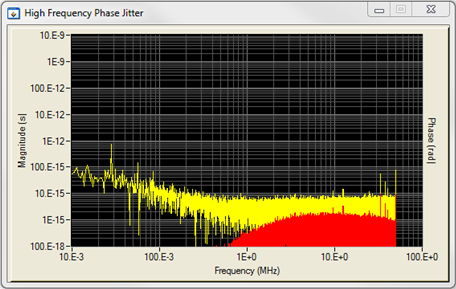SNAS522K September 2011 – December 2023 LMK03806
PRODUCTION DATA
- 1
- 1 Features
- 2 Applications
- 3 Description
- 4 Pin Configuration and Functions
- 5 Specifications
- 6 Parameter Measurement Information
-
7 Detailed Description
- 7.1 Overview
- 7.2 Functional Block Diagrams
- 7.3 Features Description
- 7.4 Device Functional Modes
- 7.5 Programming
-
8 Application and Implementation
- 8.1 Application Information
- 8.2 Typical Application
- 8.3 System Examples
- 8.4 Best Design Practices
- 8.5 Power Supply Recommendations
- 8.6 Layout
- 9 Device and Documentation Support
-
10Register Maps
- 10.1 Default Device Register Settings After Power On Reset
- 10.2 Register R0 TO R5
- 10.3 Registers R6 TO R8
- 10.4 REGISTER R9
- 10.5 REGISTER R10
- 10.6 REGISTER R11
- 10.7 REGISTER R12
- 10.8 REGISTER R13
- 10.9 REGISTER 14
- 10.10 REGISTER 16
- 10.11 REGISTER 24
- 10.12 REGISTER 26
- 10.13 REGISTER 28
- 10.14 REGISTER 29
- 10.15 REGISTER 30
- 10.16 REGISTER 31
- 11Revision History
- 12Mechanical, Packaging, and Orderable Information
Package Options
Mechanical Data (Package|Pins)
- NKD|64
Thermal pad, mechanical data (Package|Pins)
- NKD|64
Orderable Information
8.2.3 Application Curves
The following jitter and phase noise data was captured from an LMK03806 evaluation board. Fvco was set to 2500 MHz and Fpd was set to 20 MHz. In order to obtain a loop bandwidth of 62 kHz and a phase margin of 76°, the loop filter values used were C1 = 220 pF, C2 = 18 nF, R2 = 820 Ω, C3 = 10 pF, R3 = 200 Ω, C4 = 10 pF, and R4 = 200 Ω. The charge pump current was set to 3.2 mA.
 Figure 8-8 LVPECL Phase Noise, 156.25 MHz
Figure 8-8 LVPECL Phase Noise, 156.25 MHz Figure 8-10 LVCMOS Phase Noise, 50 MHz
Figure 8-10 LVCMOS Phase Noise, 50 MHz Figure 8-9 LVDS
Phase Noise, 100 MHz
Figure 8-9 LVDS
Phase Noise, 100 MHzThe following PCIe 3.0 phase jitter results were obtained using the Intel Clock Jitter Tool using waveform data captured with an Agilent DSA90804A. The RMS jitter result of 0.107 ps easily meets the PCIe 3.0 jitter requirement of 1ps with significant margin.

